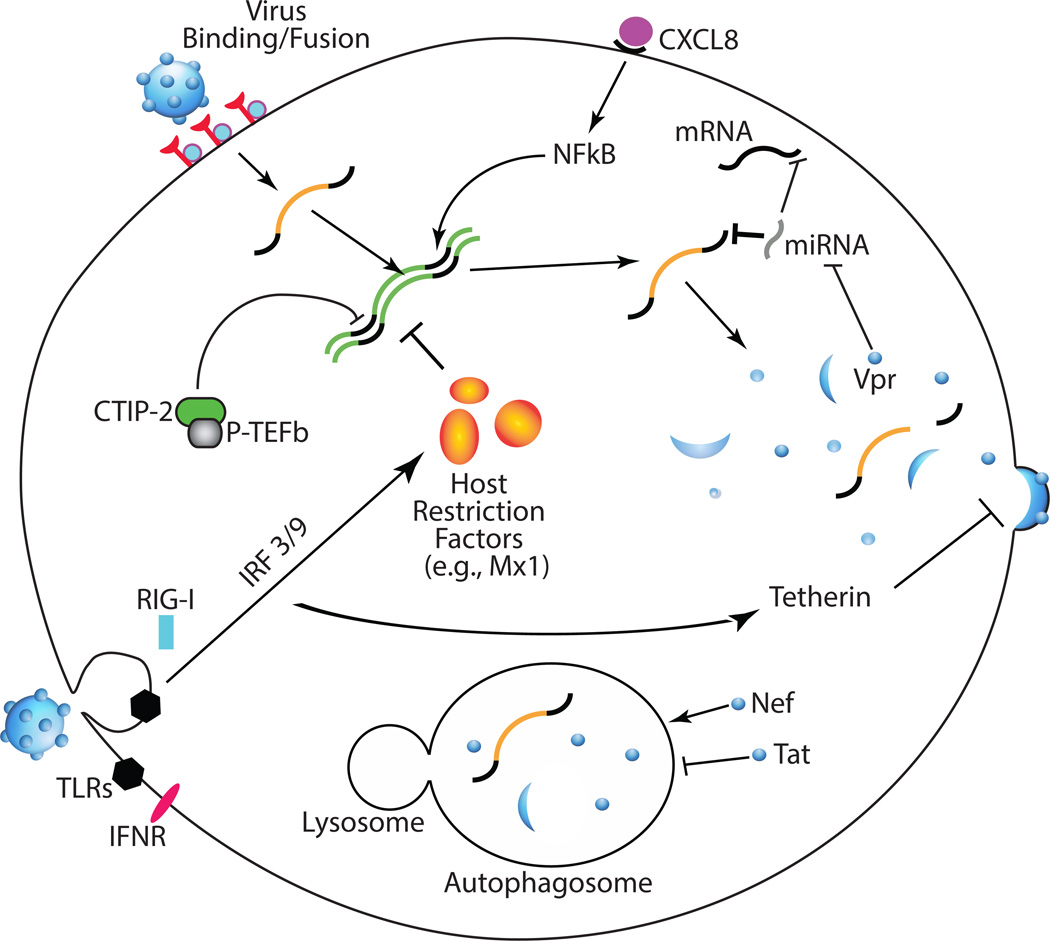Fig 1.
Recent discoveries in HIV life cycle, innate immunity, and autophagy in the CNS. Virus binding and fusion with macrophages is based on divergent Env proteins’ ability to engage cell surface receptors despite a low CD4 density. Once in the cell, viral replication is influenced by a number of host and viral factors. CTIP-2 can form an inhibitory complex with P-TEFb, shutting down viral transcription and inducing latency. CXCL8 production by multiple cells in the brain enhances viral replication via NFkB signaling. miRNAs, inhibitors of mRNA translation, can affect nearly any stage of viral life cycle by targeting viral mRNAs or by targeting mRNAs of inhibitors or enhancers of viral replication. Furthermore, HIV Vpr can affect global miRNA production by degrading Dicer. PRRs (TLRs, RIG-I, IFNR) respond to interstitial and cytoplasmic viral epitopes and intracellular cytokines inducing expression of signaling molecules, which produce restriction factors such as Mx1 and tetherin. The viral protein Nef can subvert these innate host responses by increasing host clearance of viral components though autophagy. Inversely Tat can further increase replication by inhibiting the autophagosome.

